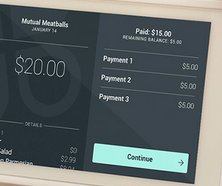Why Should You Switch from Accepting Signatures to PINs?
On October 1st, 2015, the US retail industry was supposed to reach a major milestone. That was the deadline for the switch to EMV credit cards with PINs. If retailers didn’t begin accepting those cards, they would be held liable for any fraudulent transactions. Before that date, the credit card issuer undertook that liability.
However, not much has changed months after the deadline. Many US merchants haven’t purchased new card readers to accept EMV cards. They rely on their current card readers, which ask shoppers to sign for their purchases. These transactions are less secure than entering a PIN. Read on to learn why purchasing new card readers are better for merchants.
Signatures Aren’t Safe
It’s easy for consumers to sign to complete a transaction. There’s always some kind of stylus attached to the card reader. In fact, shoppers are used to it.
Familiarity doesn’t mean an action is secure, though. We’ll use an example to illustrate. Someone steals Jim’s credit card. The thief buys hundreds of dollars of merchandise because it’s easy to forge Jim’s signature. Moreover, the card readers can’t verify whether it’s really Jim signing for those purchases or someone else with excellent forgery skills.
Protect Customer Data by Accepting Chip and PIN Cards
EMV credit cards were designed to be safer than traditional magnetic stripe cards. Magnetic stripe cards store payment data within the stripe. Every time the cardholder swipes a magnetic stripe card, the card transfers the payment information to the POS system.
What makes EMV cards different? They have a built-in microchip. The microchip stores payment information, just as a magnetic stripe does. Here’s the difference: when a consumer pays with an EMV card, the microchip sends payment data cloaked in an unbreakable code. If a hacker tries to break into a retailer’s POS system, they can’t do anything with EMV credit card numbers, because they can’t read them.
The PIN adds extra security. Should someone steal an EMV credit card and use it at a bricks-and-mortar store, the thief won’t know the PIN to complete the transaction.
The Advantage of Embracing New Technology
Many retailers don’t want to invest in new card readers. They see it as an unnecessary expense, especially when EMV cards still have a magnetic stripe so their old card readers can accept them.
They don’t take into account the cost of fraud, though. If they can’t accept chip cards with PINs, those retailers will be liable for fraudulent transactions. And that cost can be far greater than buying new card readers.
MBankcard Payment Processors: Keep Your Customers Safe by Accepting EMV Cards
You can protect your customers’ credit card data (and reduce your fraud liability) by accepting EMV cards. MBankcard offers the latest card readers at affordable prices, making it easy and cost-effective for you. Plus, it’s free to set up a merchant account, and we offer some of the lowest rates on the market. Contact MBankcard today at Contact Us to learn more.





